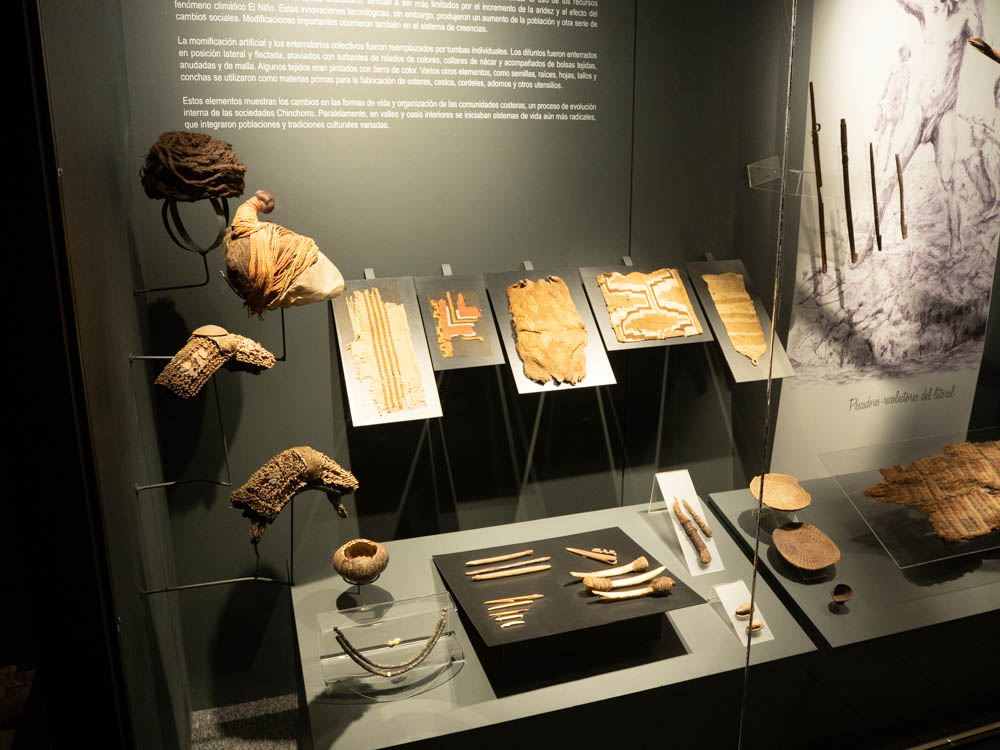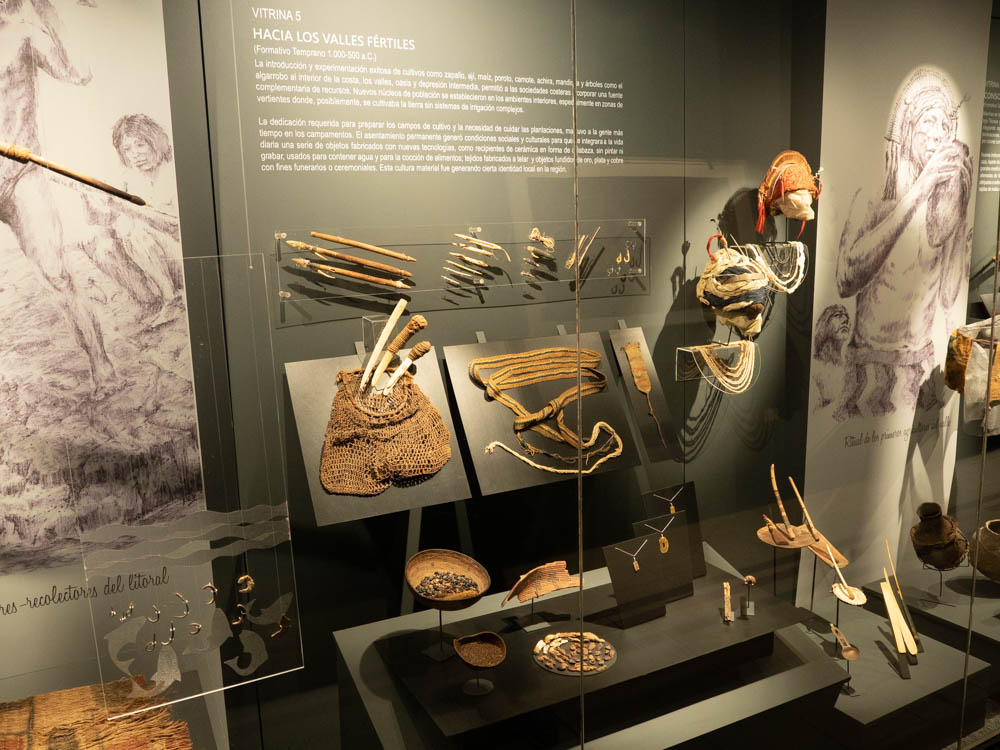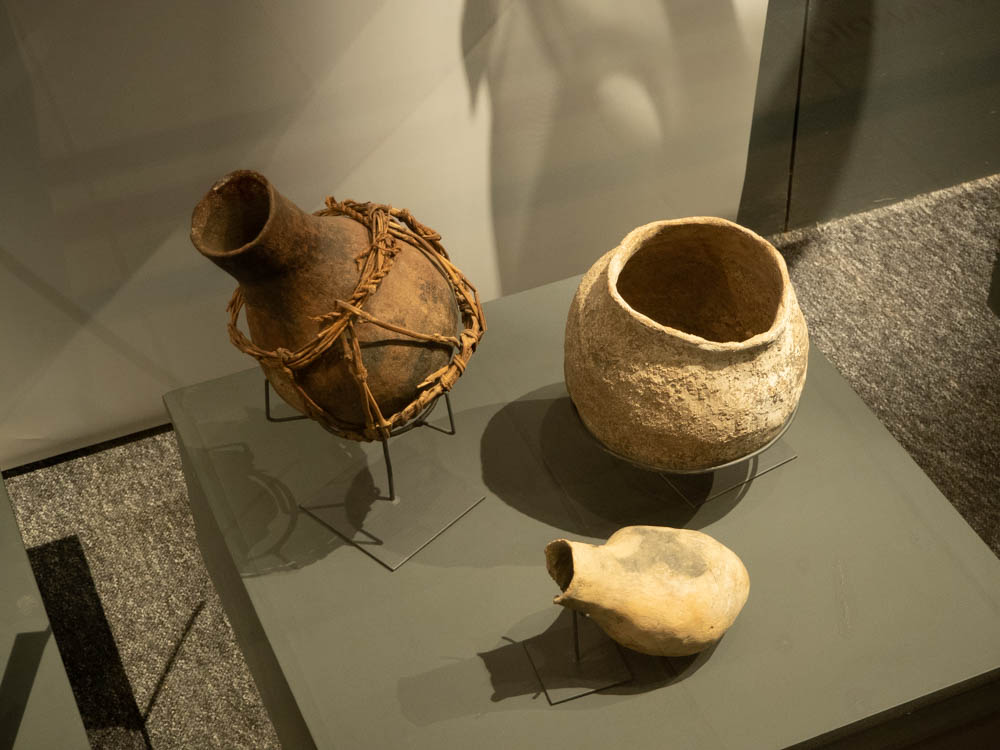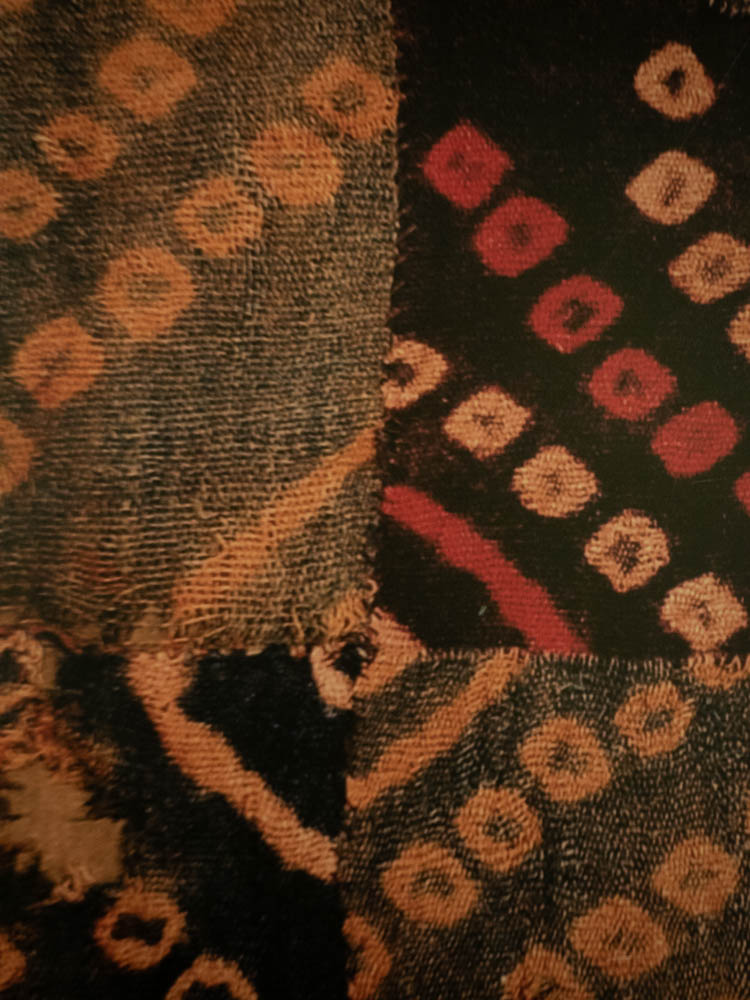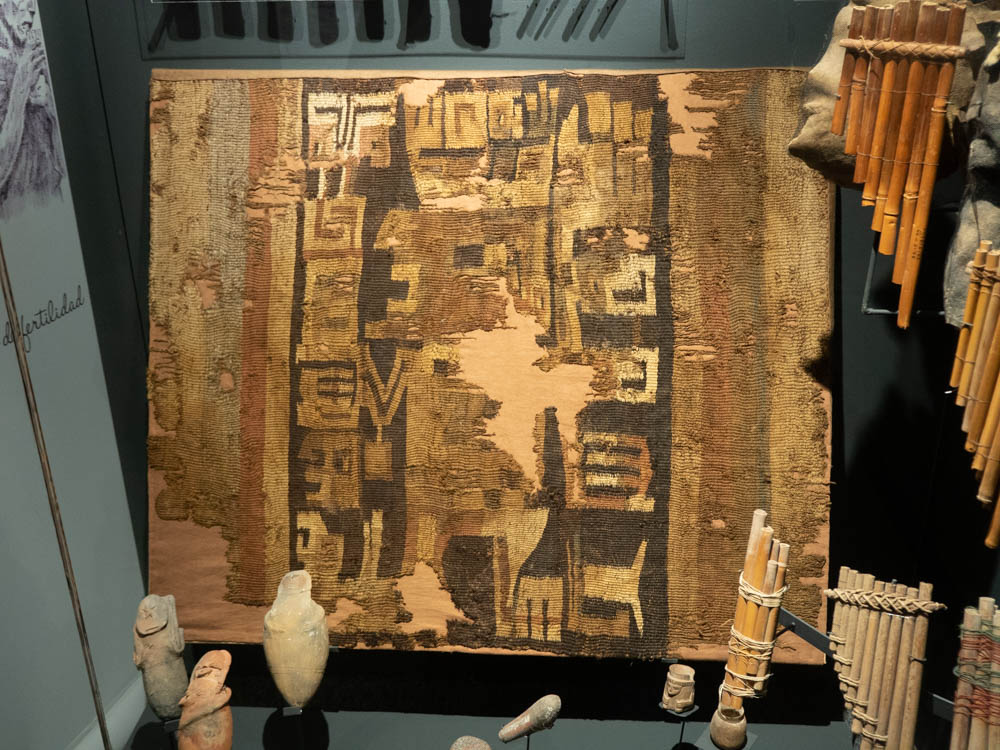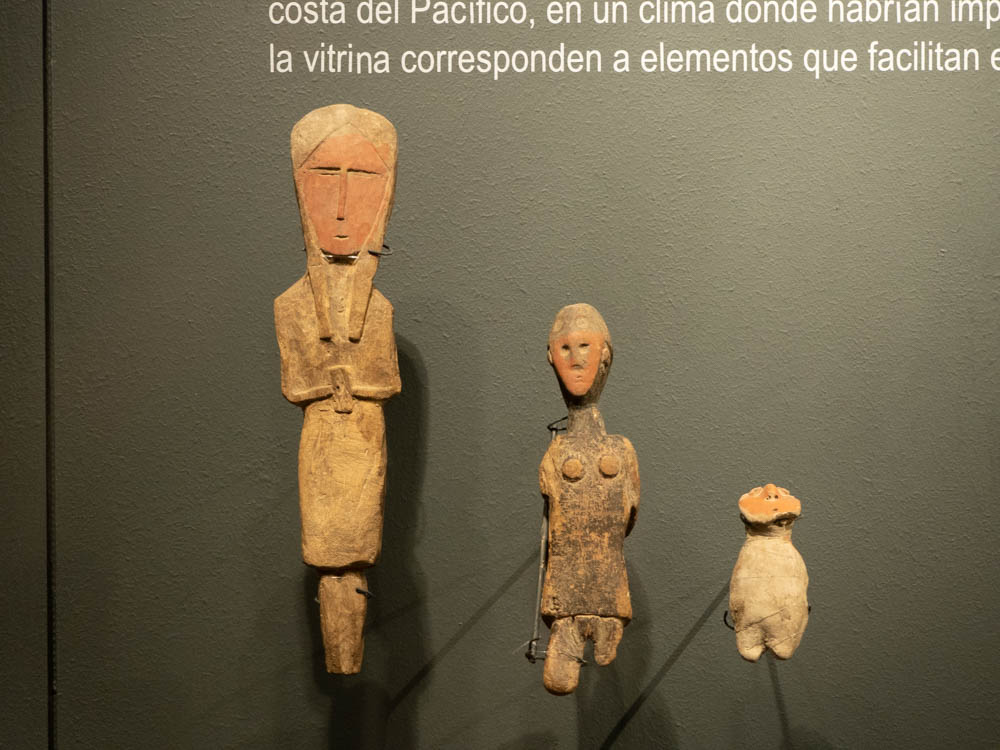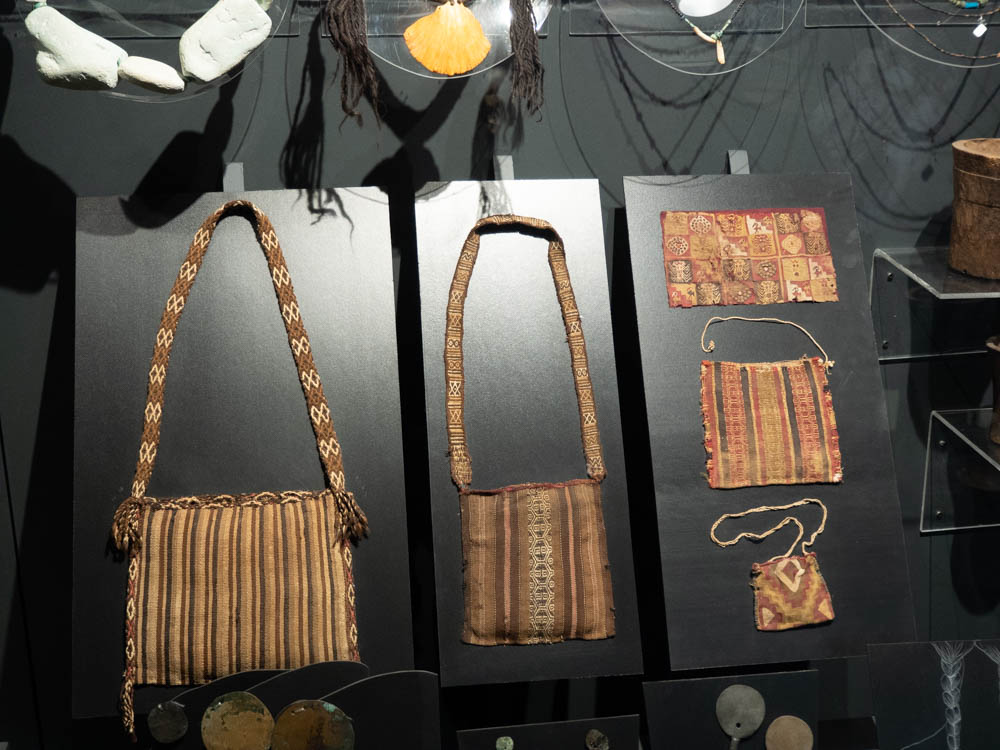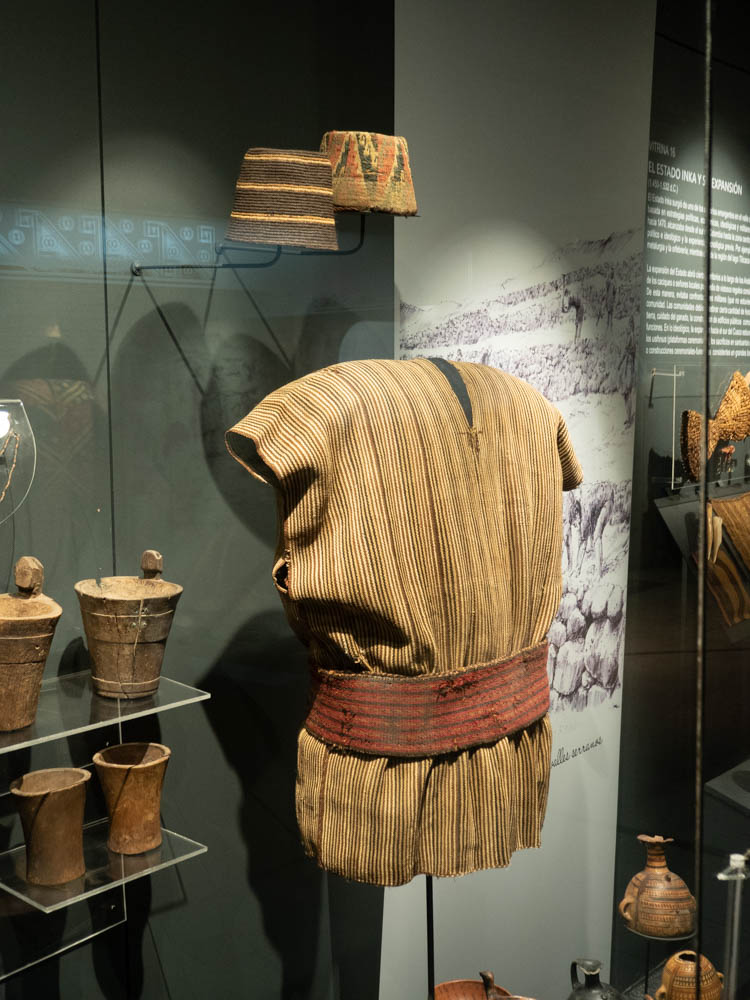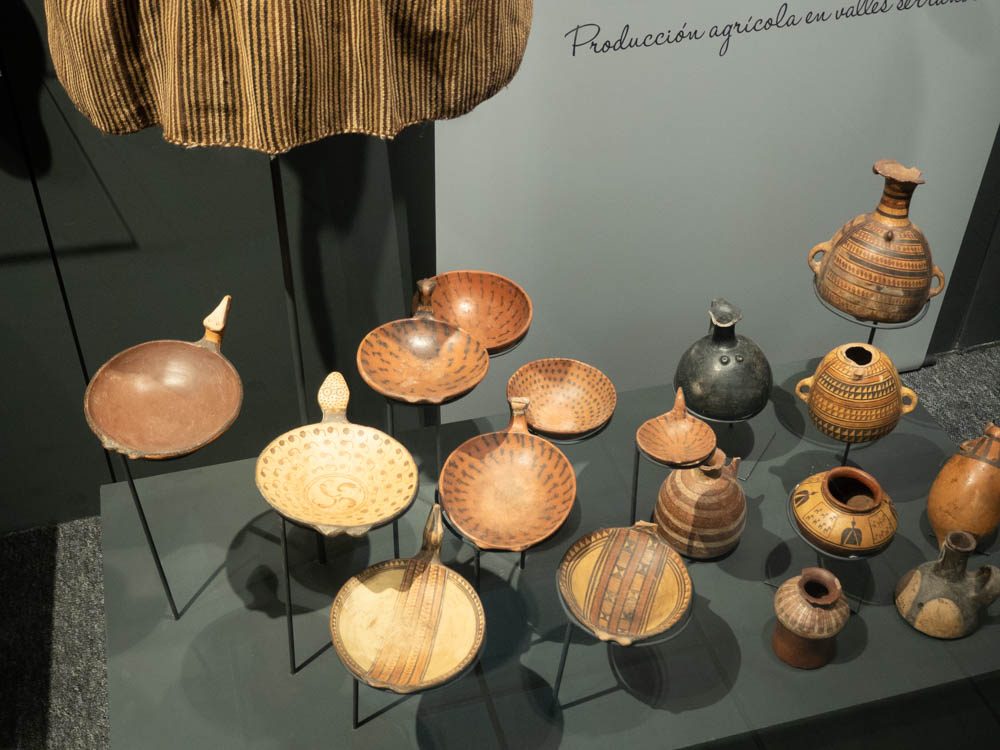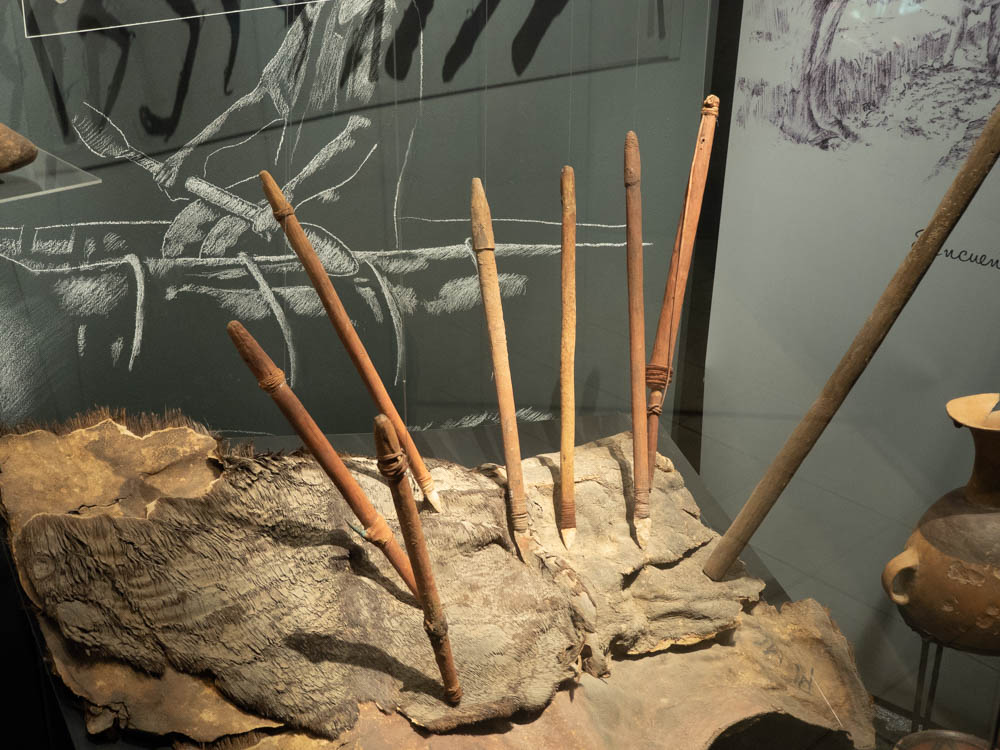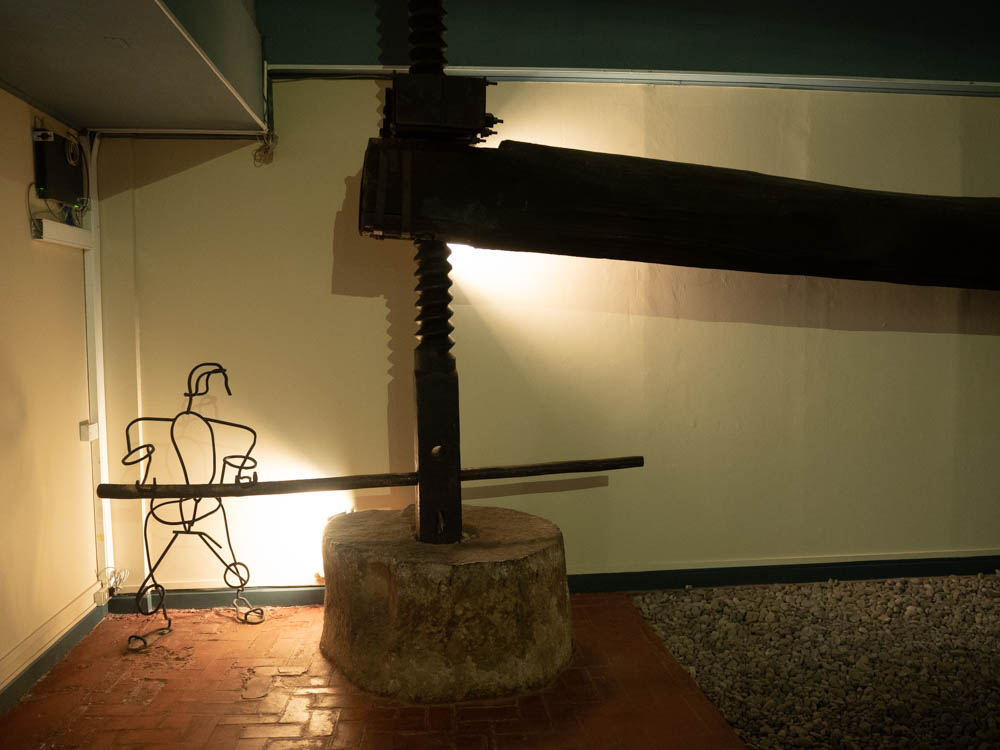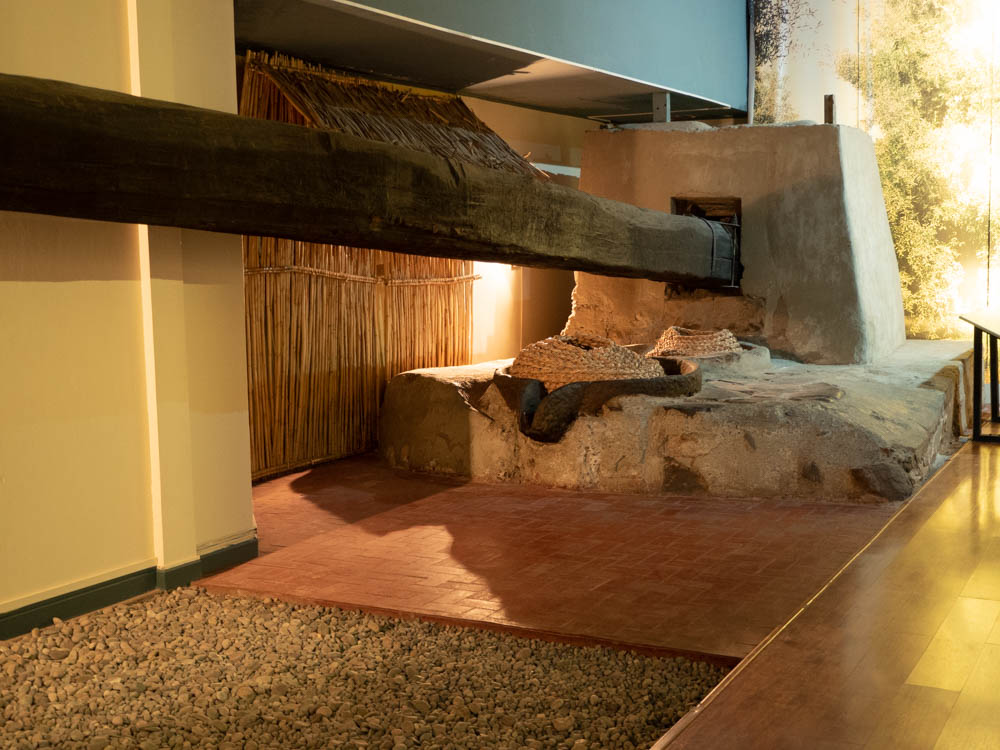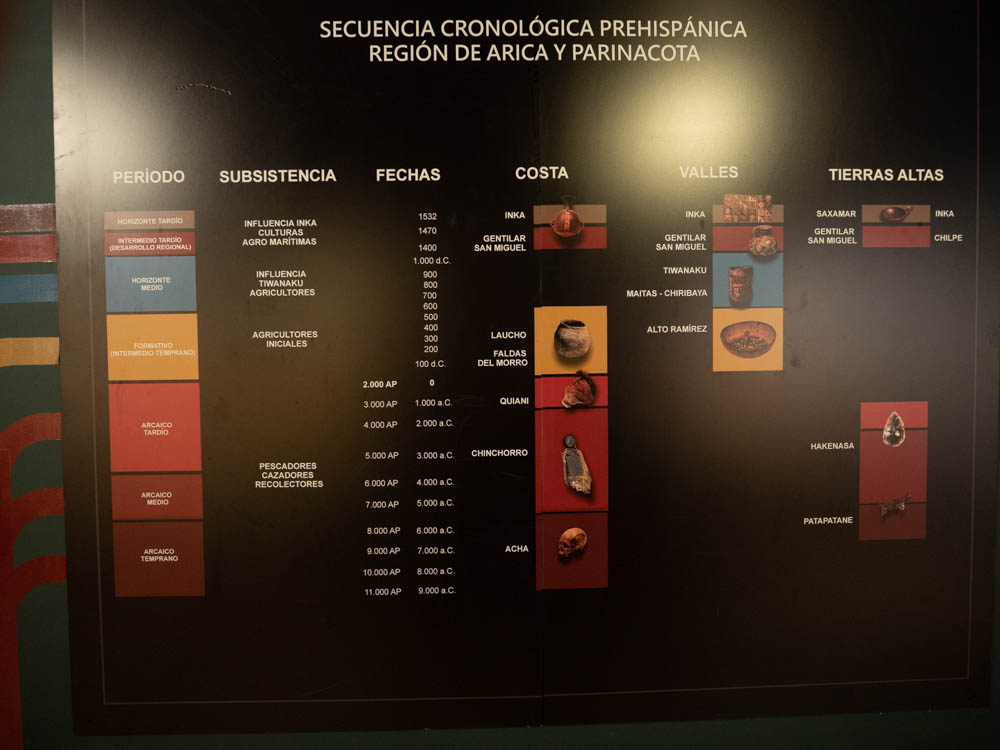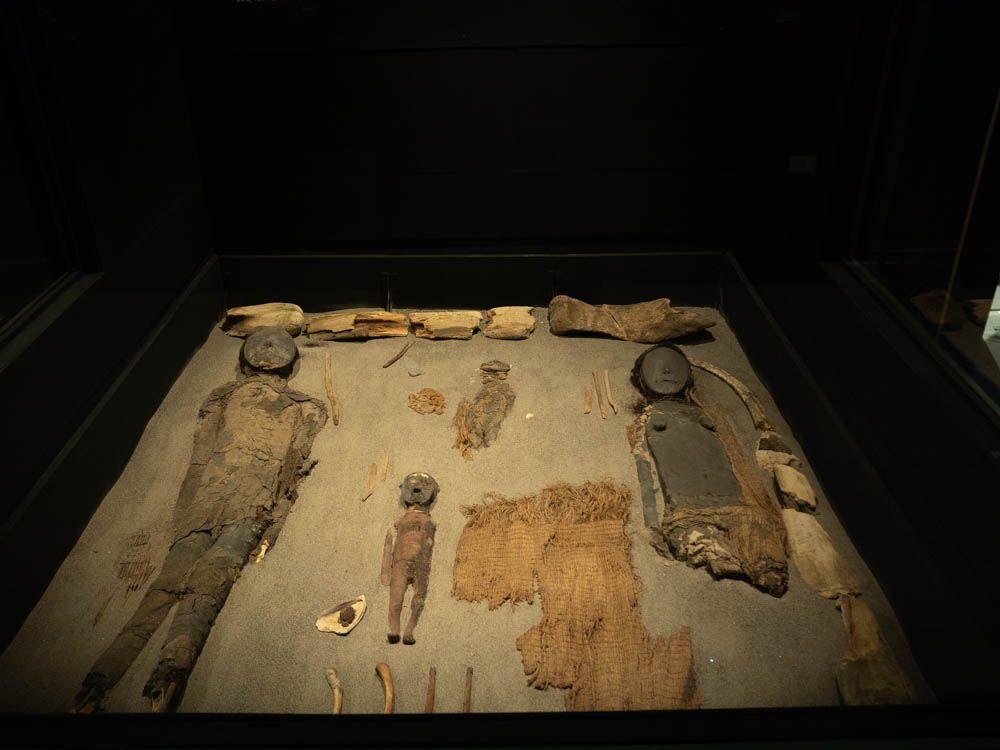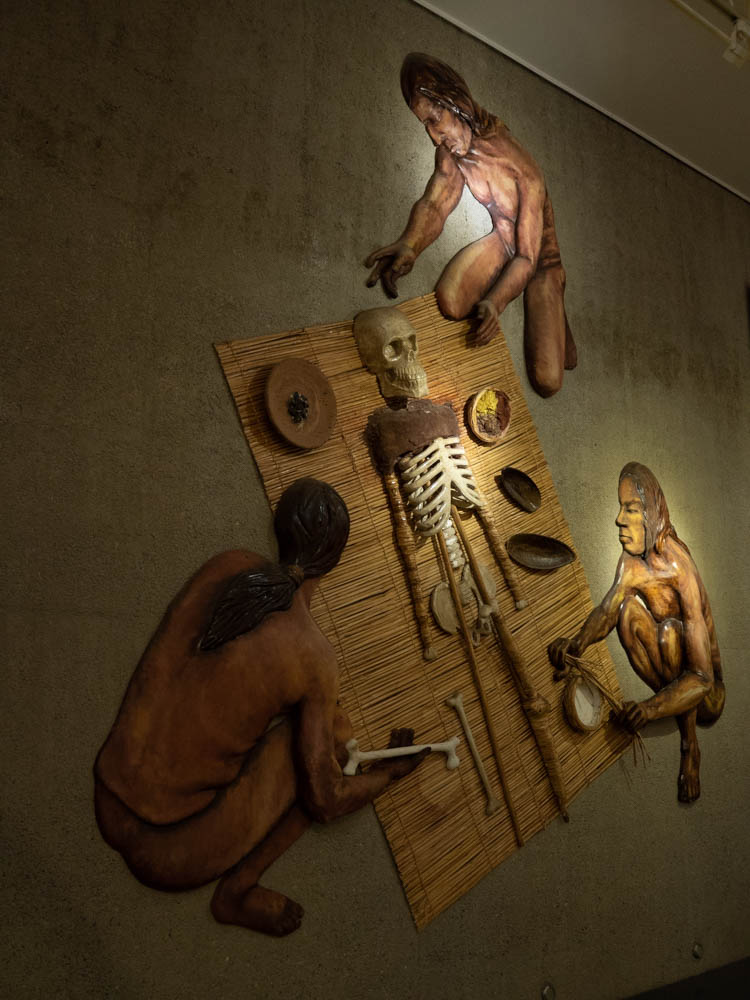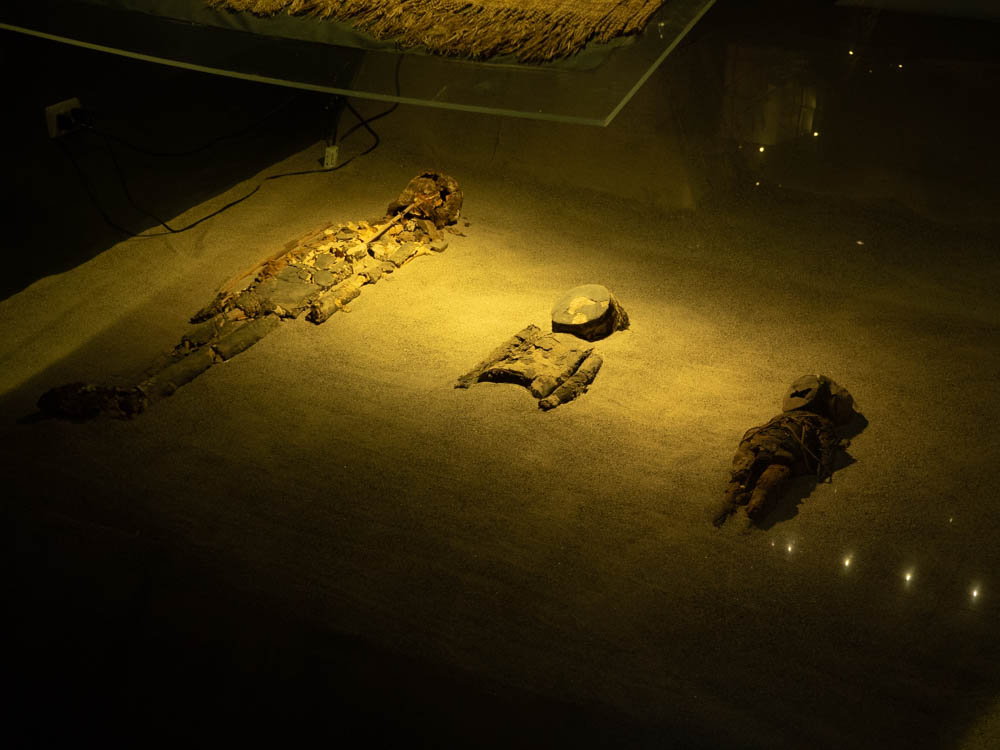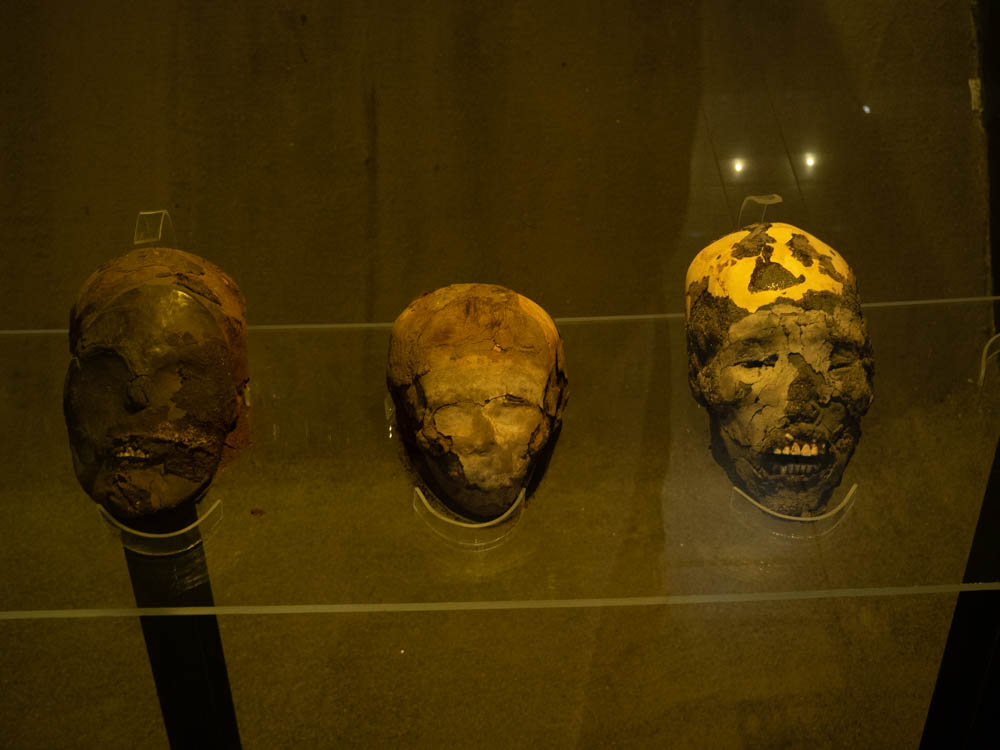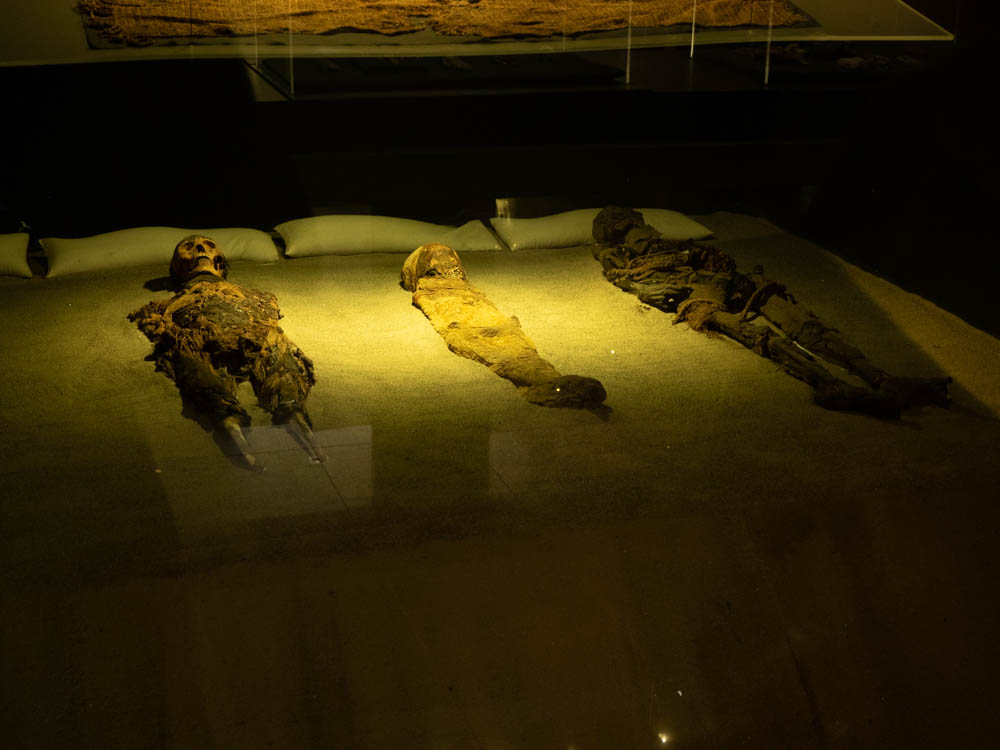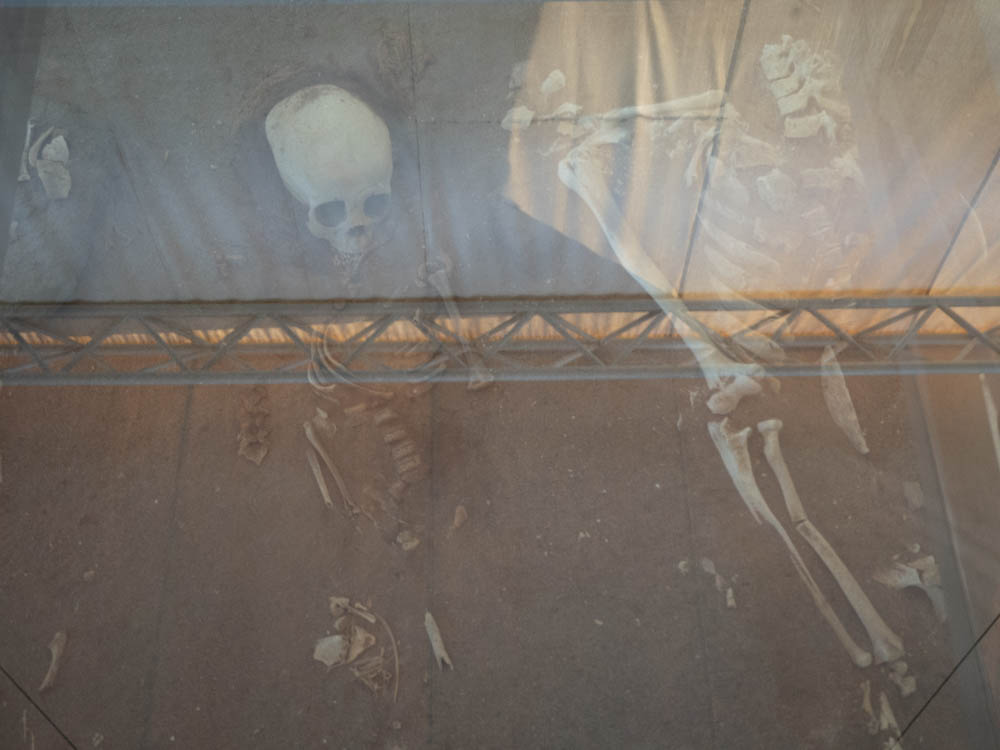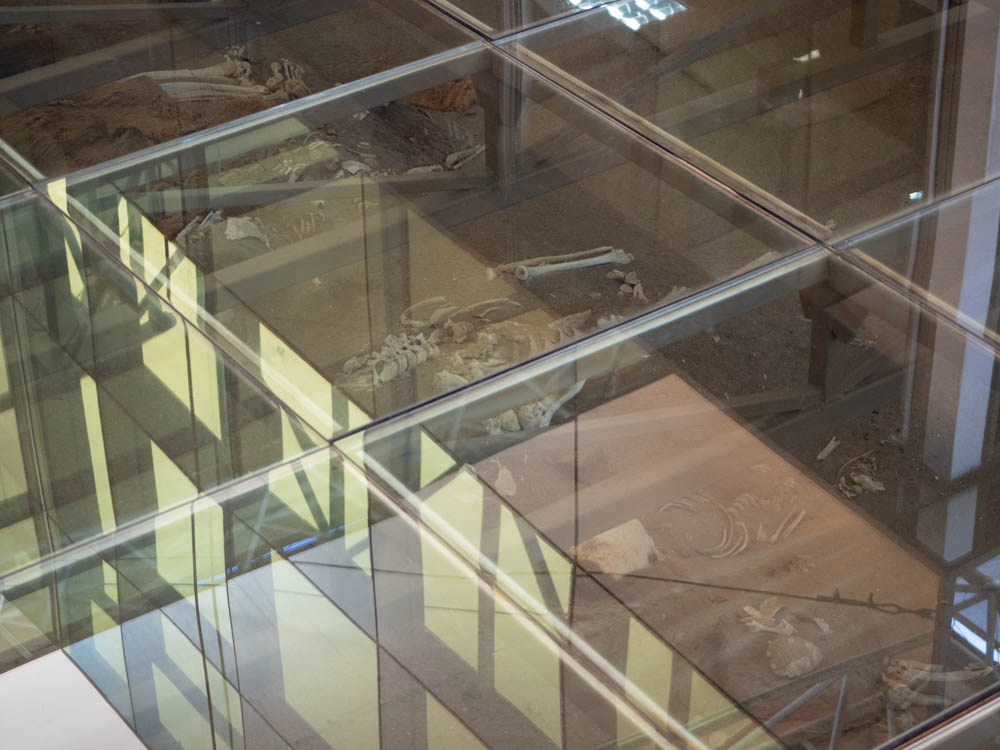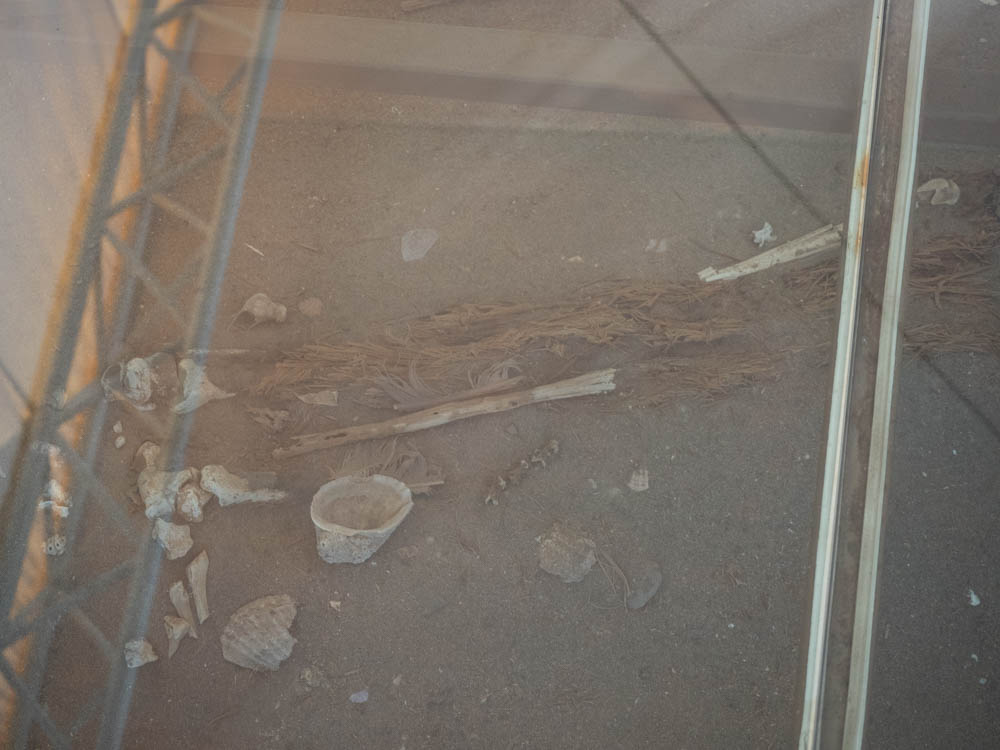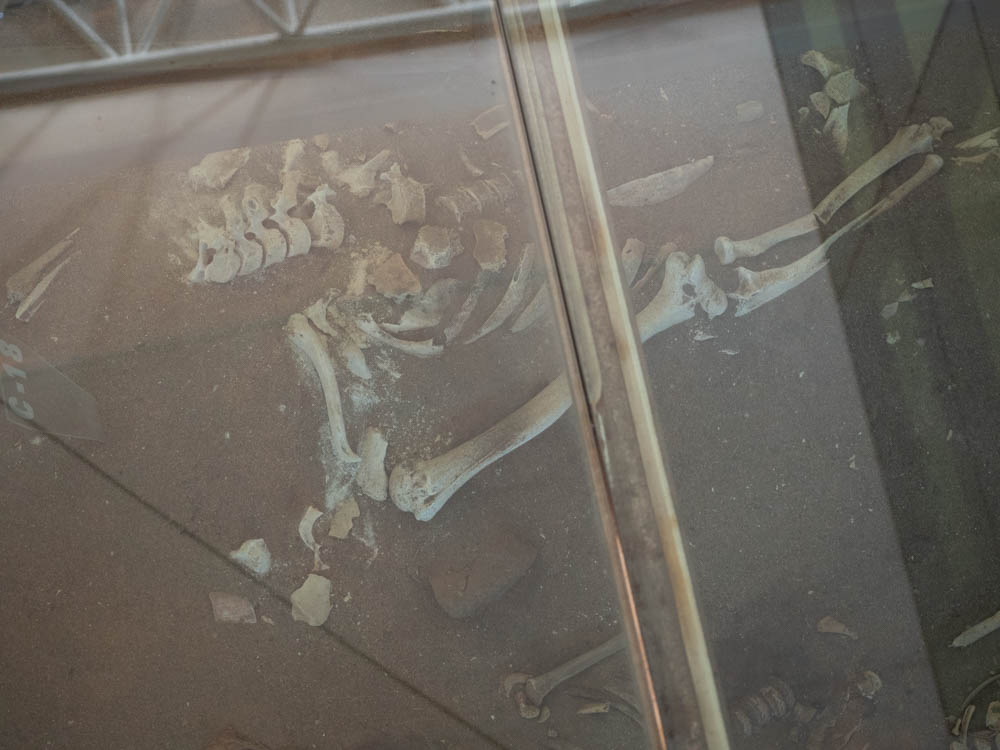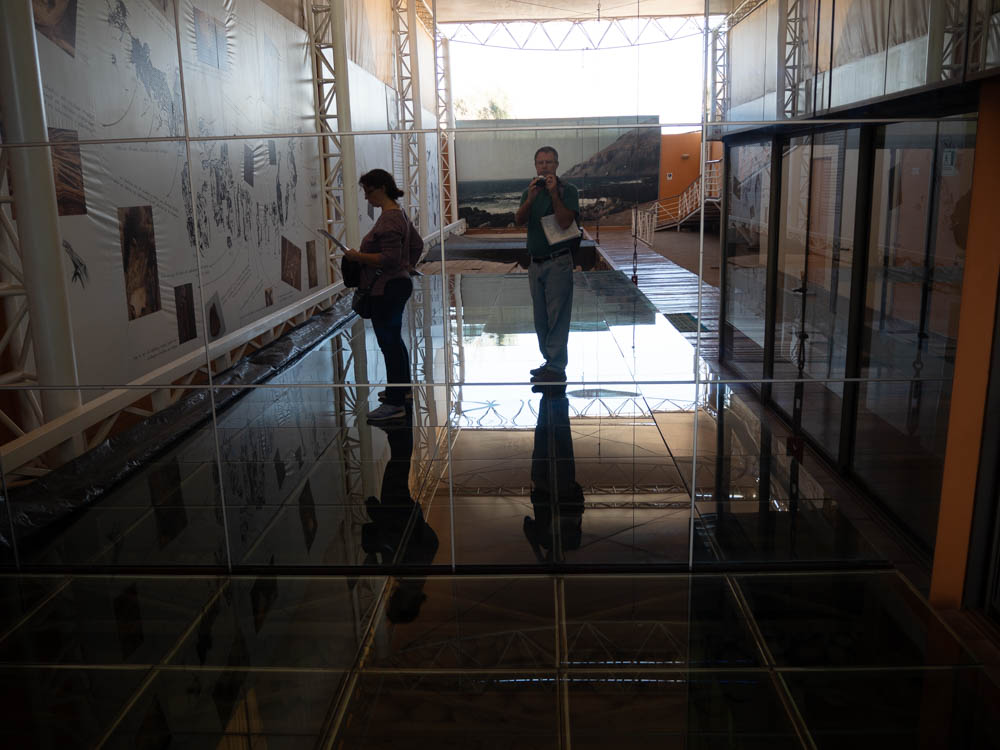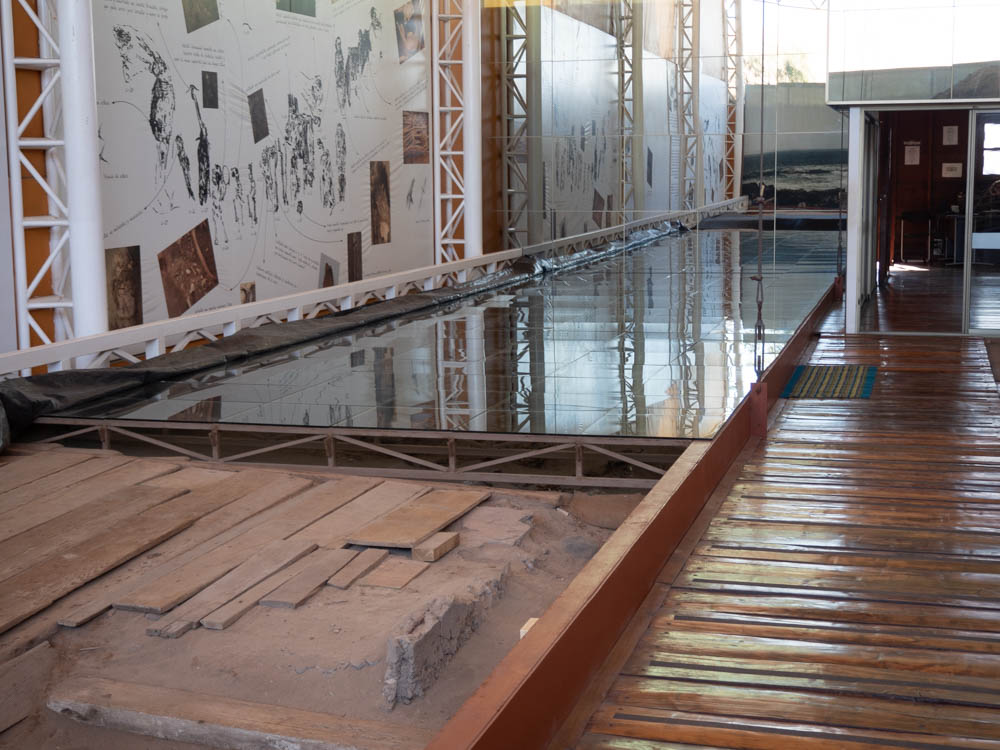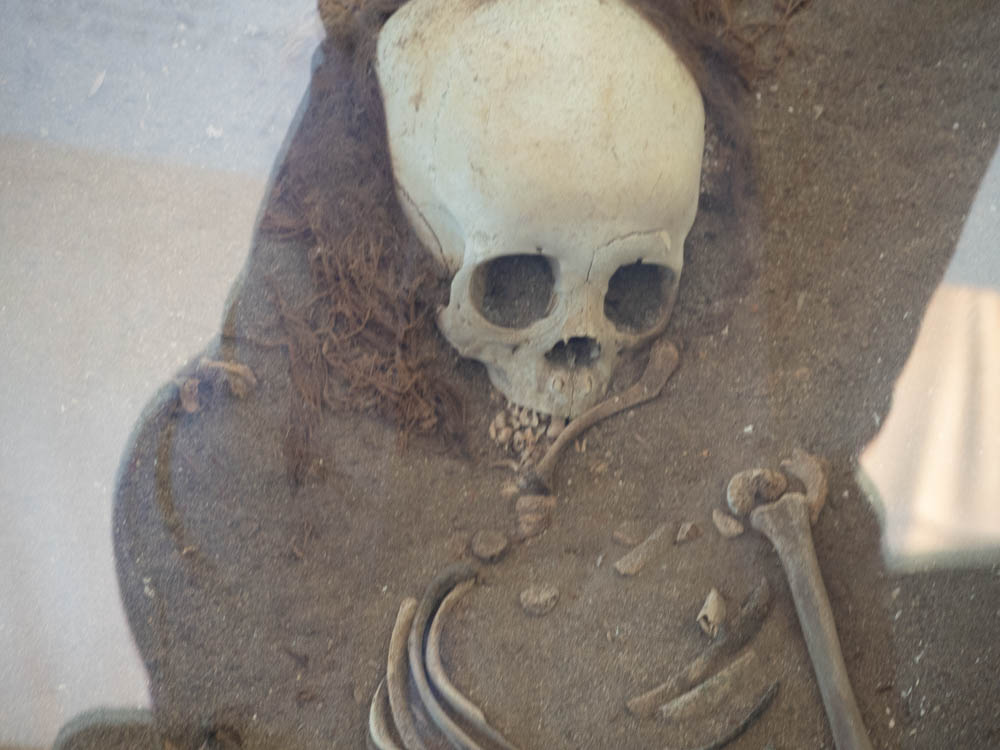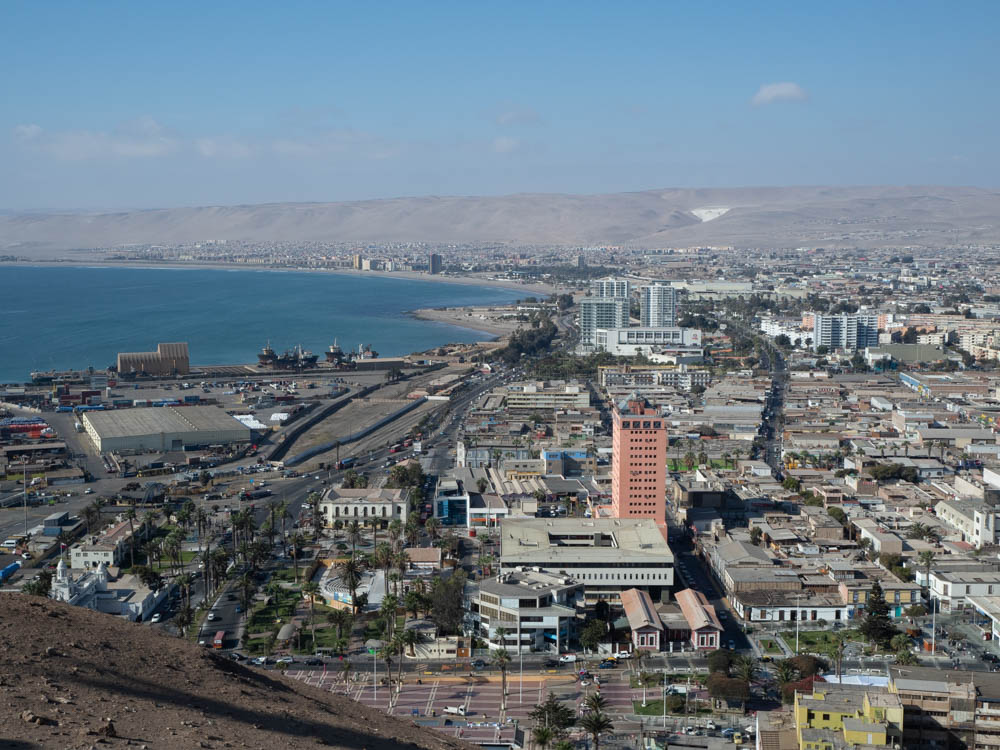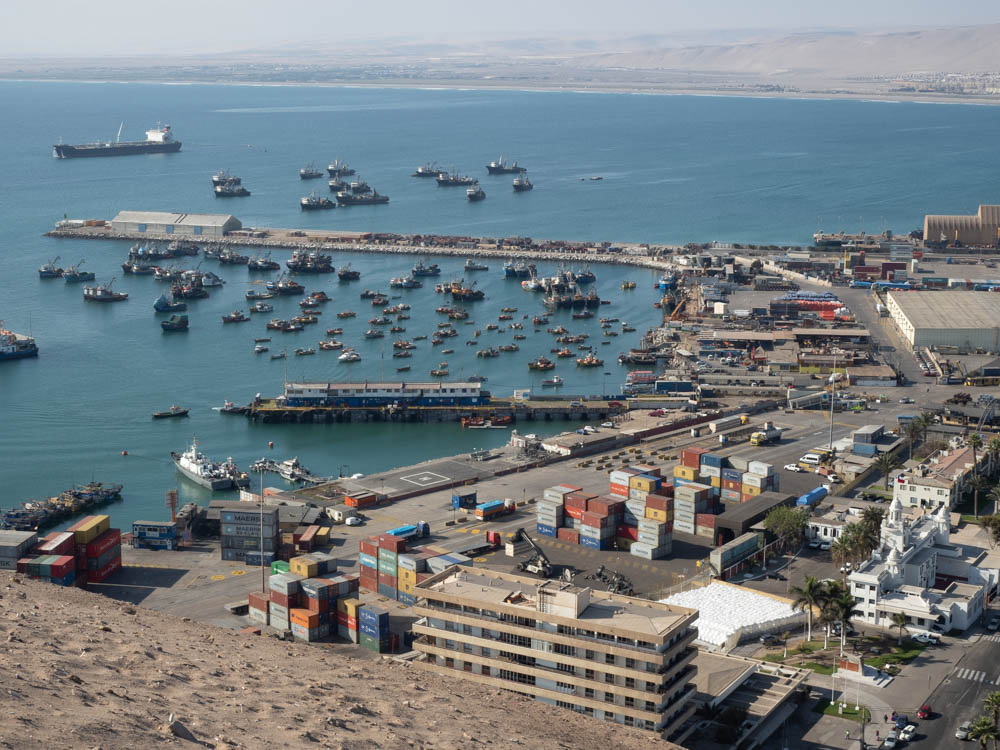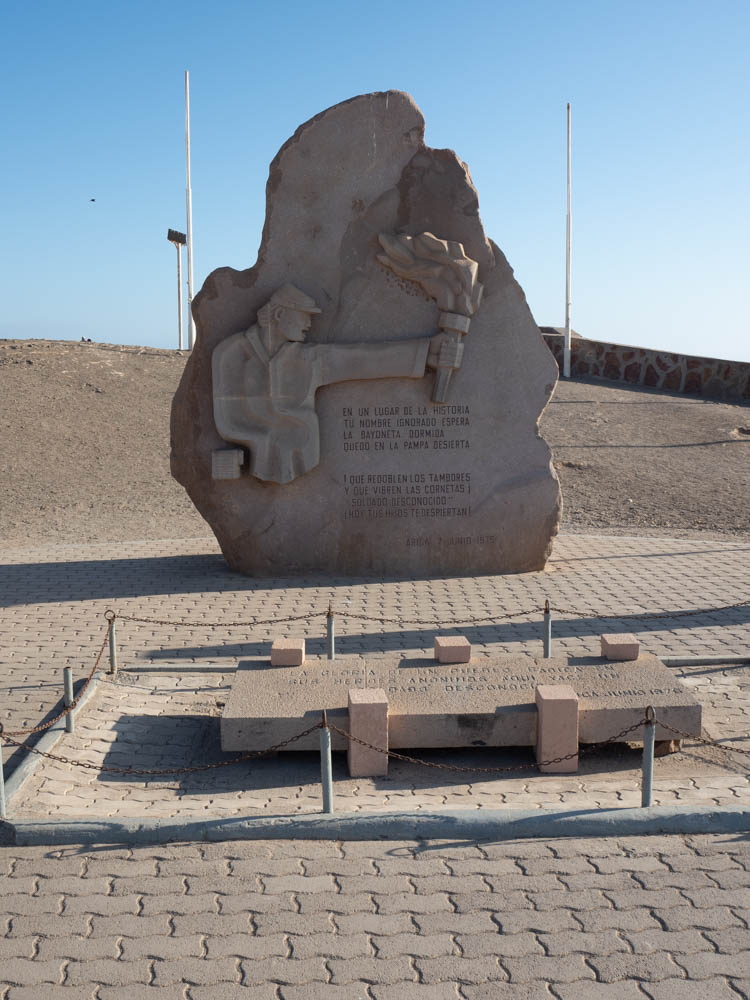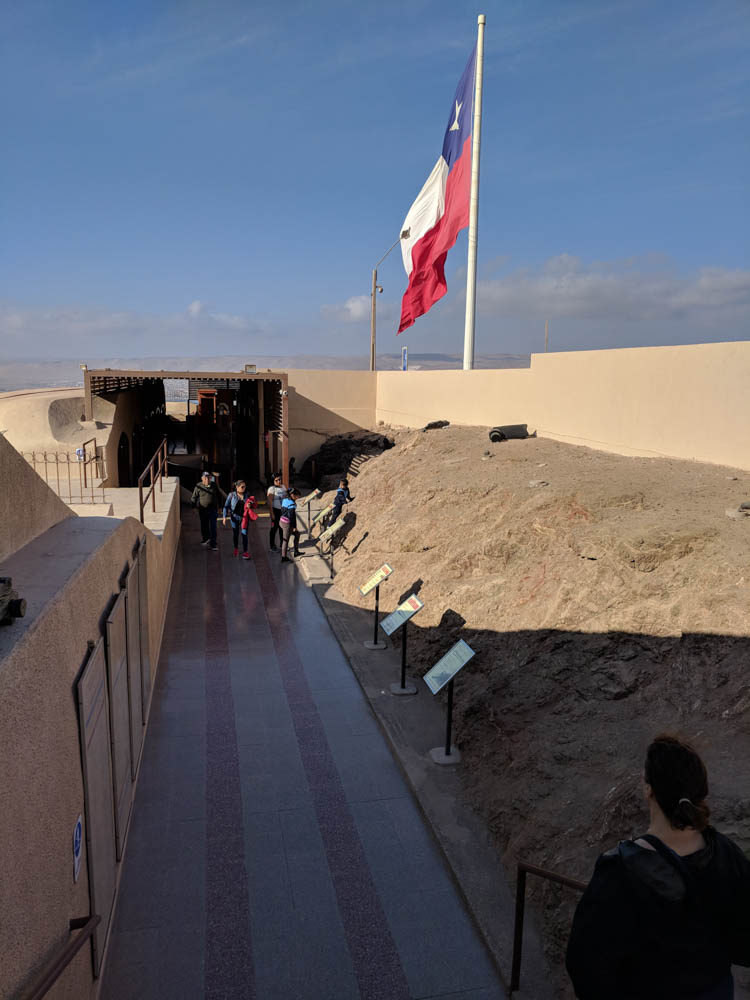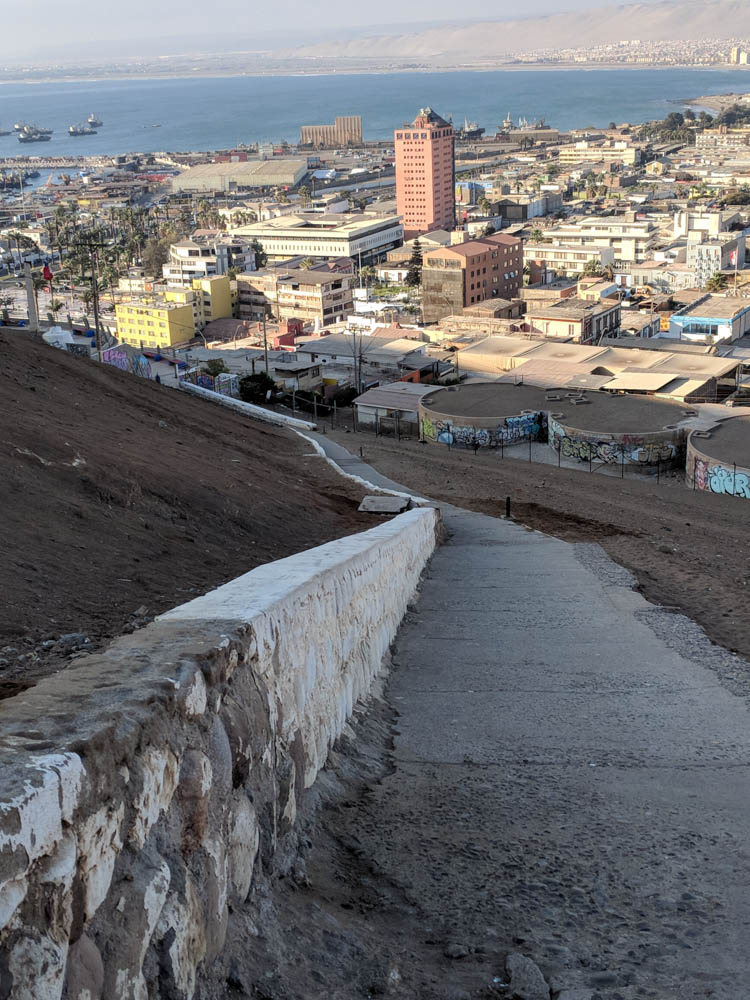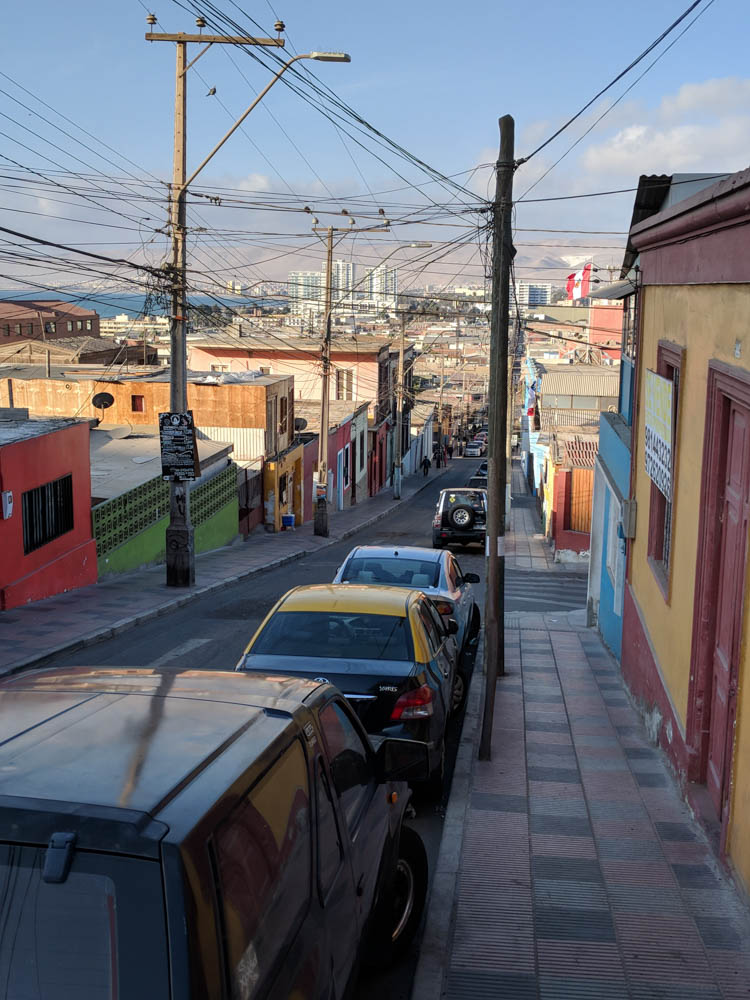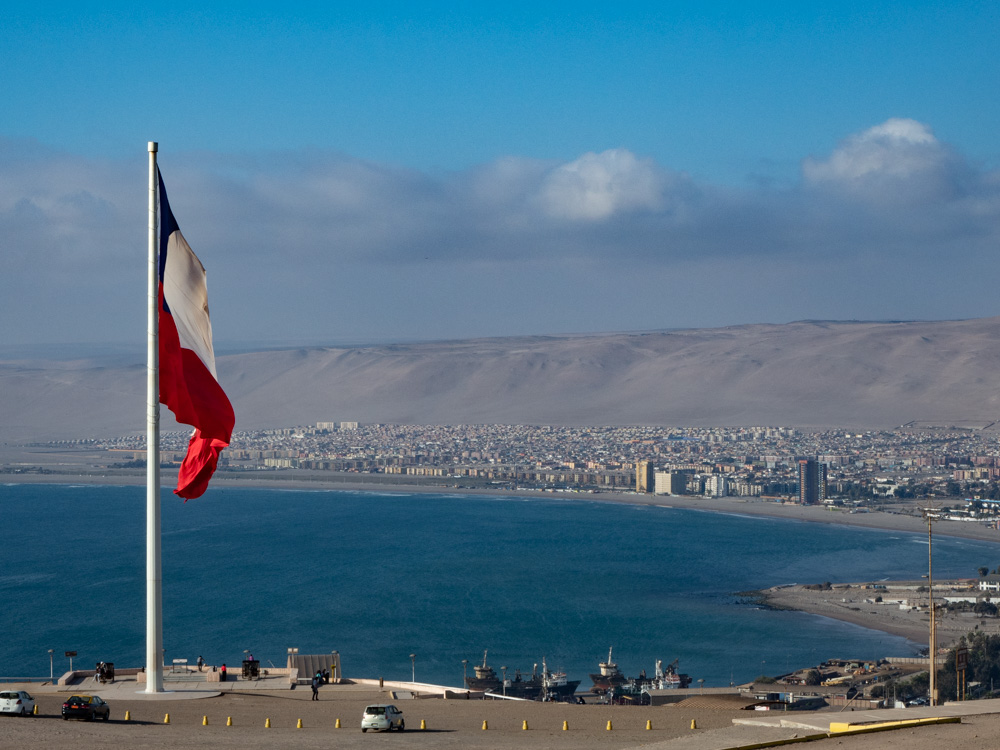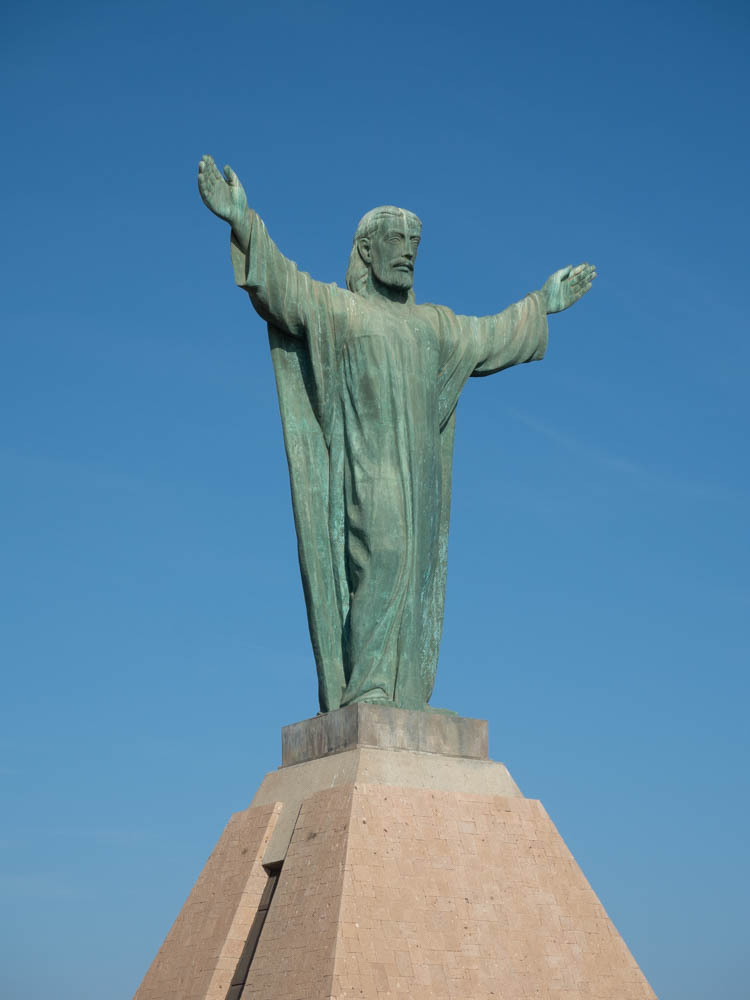One of the primary reasons we chose to visit Arica was because it is home to some of the worlds oldest mummies from the Chinchorro culture. The claim is some of the mummies discovered in this area predate the Egyptian mummies by at least two thousand years, approximately 5000 B.C. Our search for mummies took us to the Museo Arqueologico San Miguel de Azapa, which is run by a local university.
There were two primary parts to the museum. The first museum had artifacts from the many civilizations that lived in the area going back to 9,000 B.C. (or A.C.).
The second museum at the site is the mummy museum. These are not your run-of-the-mill, Scooby Doo style mummies.
As with other artifacts on the trip, there are multiple theories as to why the Chinchorro mummified their departed, but one in particular stands out. Because of the arid nature of the Atacama region, dead bodies did not decay quickly, if much at all. Because the dead were preserved so well, and for so long, they became a very important part of Chinchorro culture. Over time the society started to “improve” the process that had already started naturally and created rituals around it.
In contrast to the Egyptians, who only mummified their elite, the Chinchorro mummified everyone. One theory has the rituals starting with children that were either stillborn or died shortly after death, and then expanding to other sections of the population over time. Organs where typically removed and the bodies were repacked with clay or other materials to hold shape. Many mummies were found with clay masks which covered up the work done to remove the brain. In some cases the bodies were wrapped with the skin intact, and in others the skin was removed before the body was wrapped.
My favorite story about the mummies relates to their place in the community. In some tribes the dead still “participated” in tribal activities by speaking through family members. This was particularly troublesome for living tribal leaders who had to deal with the family members of dead tribal leaders inserting themselves into leadership decisions by speaking on behalf of their dead loved ones. The dead were apparently leading from the great beyond.
These artifacts, which have survived for centuries, may be in danger. In recent years the Atacama desert has received more rain than usual. This has caused the blooming of plants that have not grown there for a long time and is causing unprotected mummies to deteriorate.
Our next stop was a museum in downtown Arica called the Museo de Sitio Colón 10 (the street address is Colon 10). A local business man purchased a piece of property and started construction for a new business. During excavation mummies were discovered, construction was halted, and a local university bought the property when it was determined the mummies were to fragile to move. Because the university wanted the public to have access to the artifacts, they came up with a unique solution which involved the installation of a thick glass floor over the mummies. Very cool.
Next we made our way up a steep hill to El Morro de Arica, which is a large historical plaza overlooking the city. Great views, a war museum, monuments, and Jesus keeping watch over the ocean. Definitely worth the climb.
We were both exhausted. We found some dinner and then made our way back to the apartment. When we were at dinner I pulled out my wallet to get a credit card and realized my primary card was gone. Hello sinking feeling.
After retracing our steps, the top theory was I had left the card at a grocery store in Iquique earlier in the week. A call the next morning confirmed they were holding my card at customer service. This happened to be one of the few times on the trip we would be backtracking any distance so we were in a position to pick the card up on the way through Iquique. What are the odds? As an old boss of mine used to say, “tis better to be lucky than good”.
Tomorrow is another travel day.
Stay tuned.
Will

